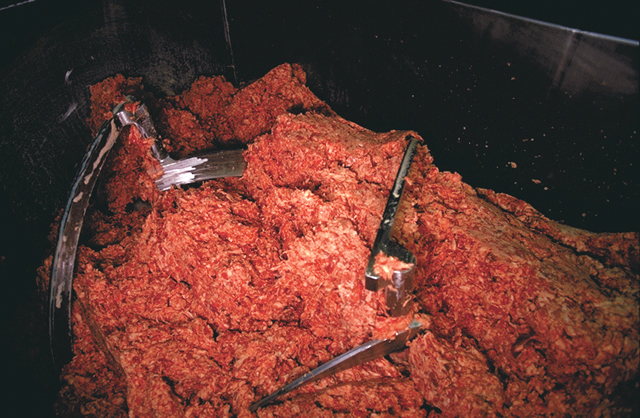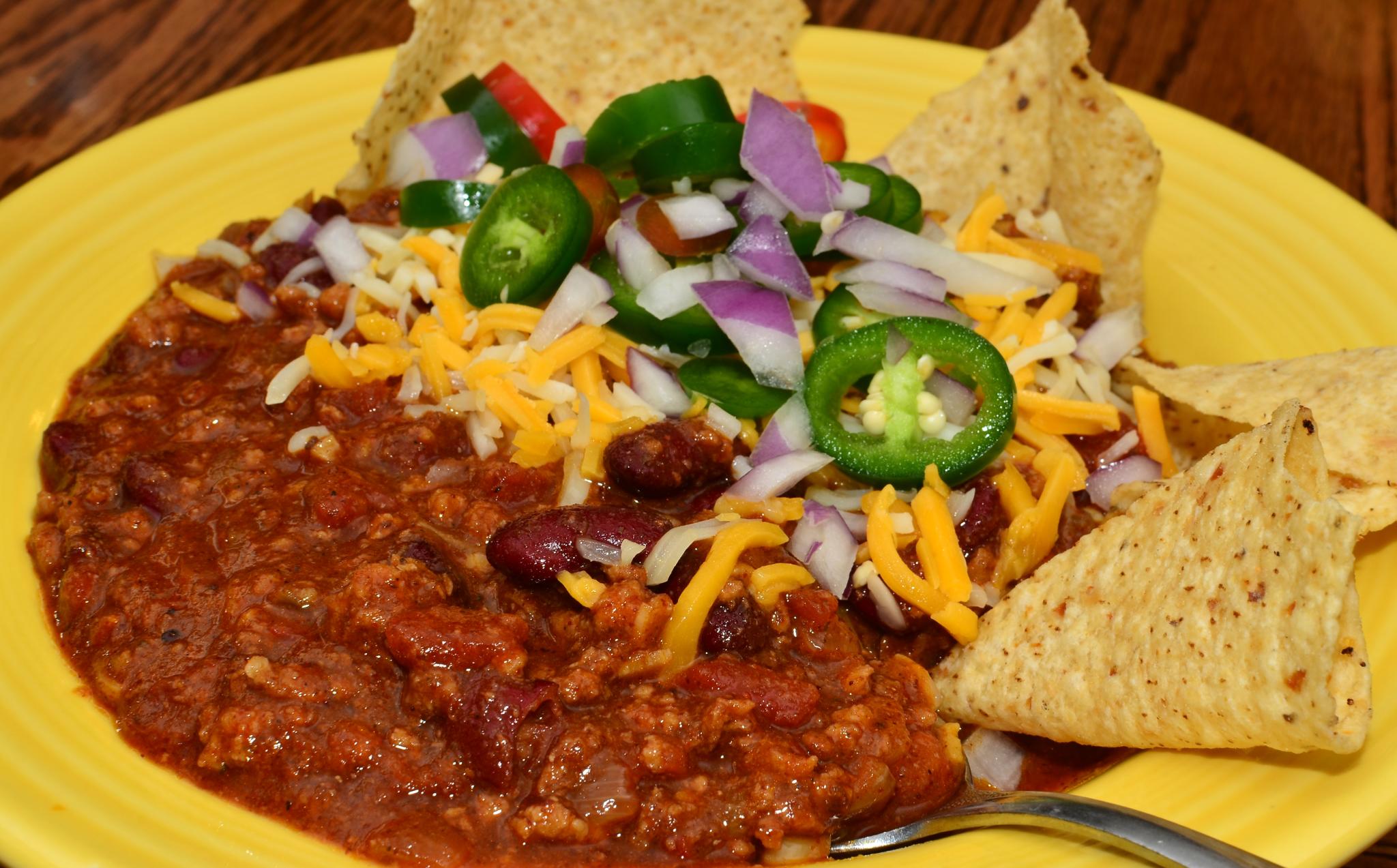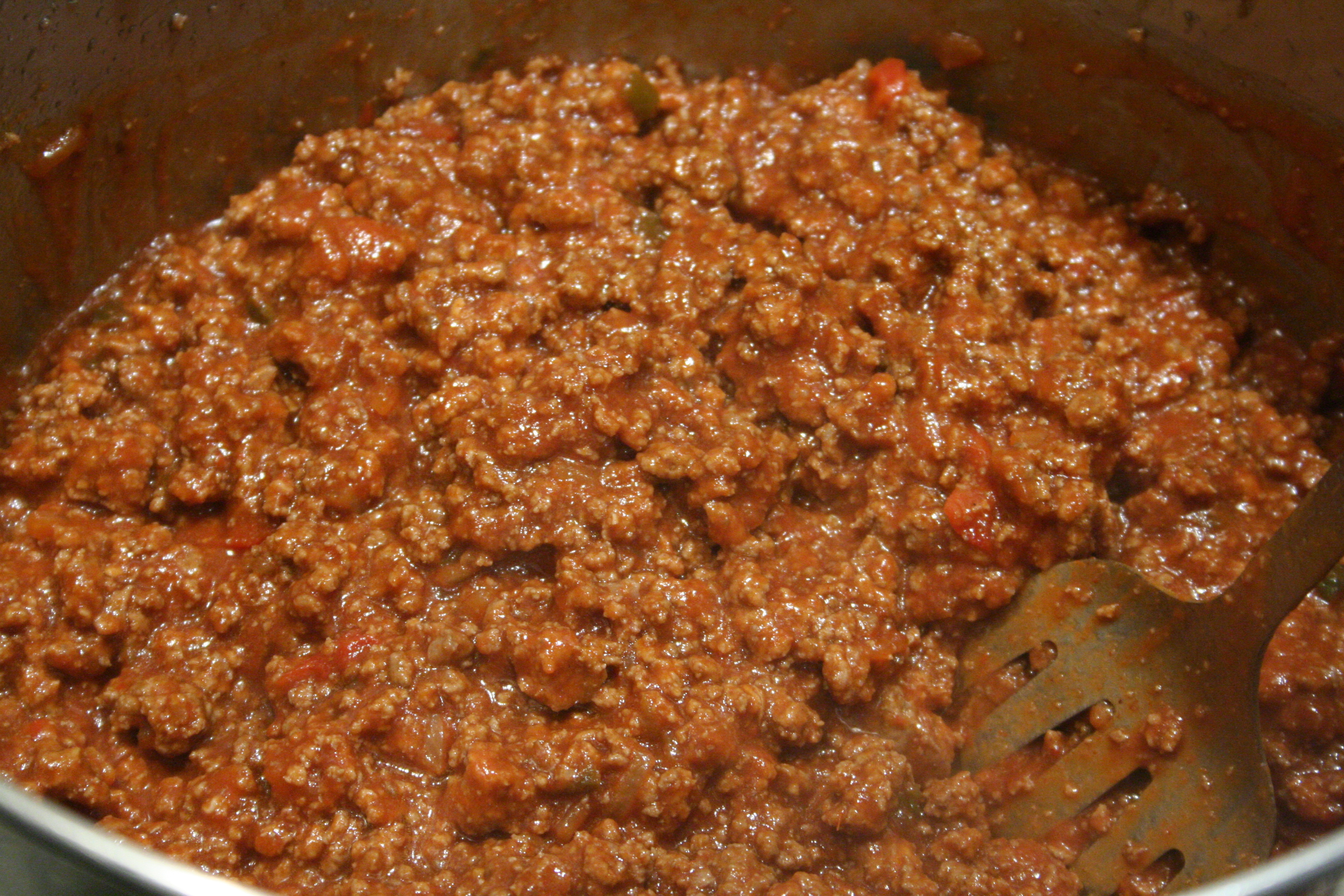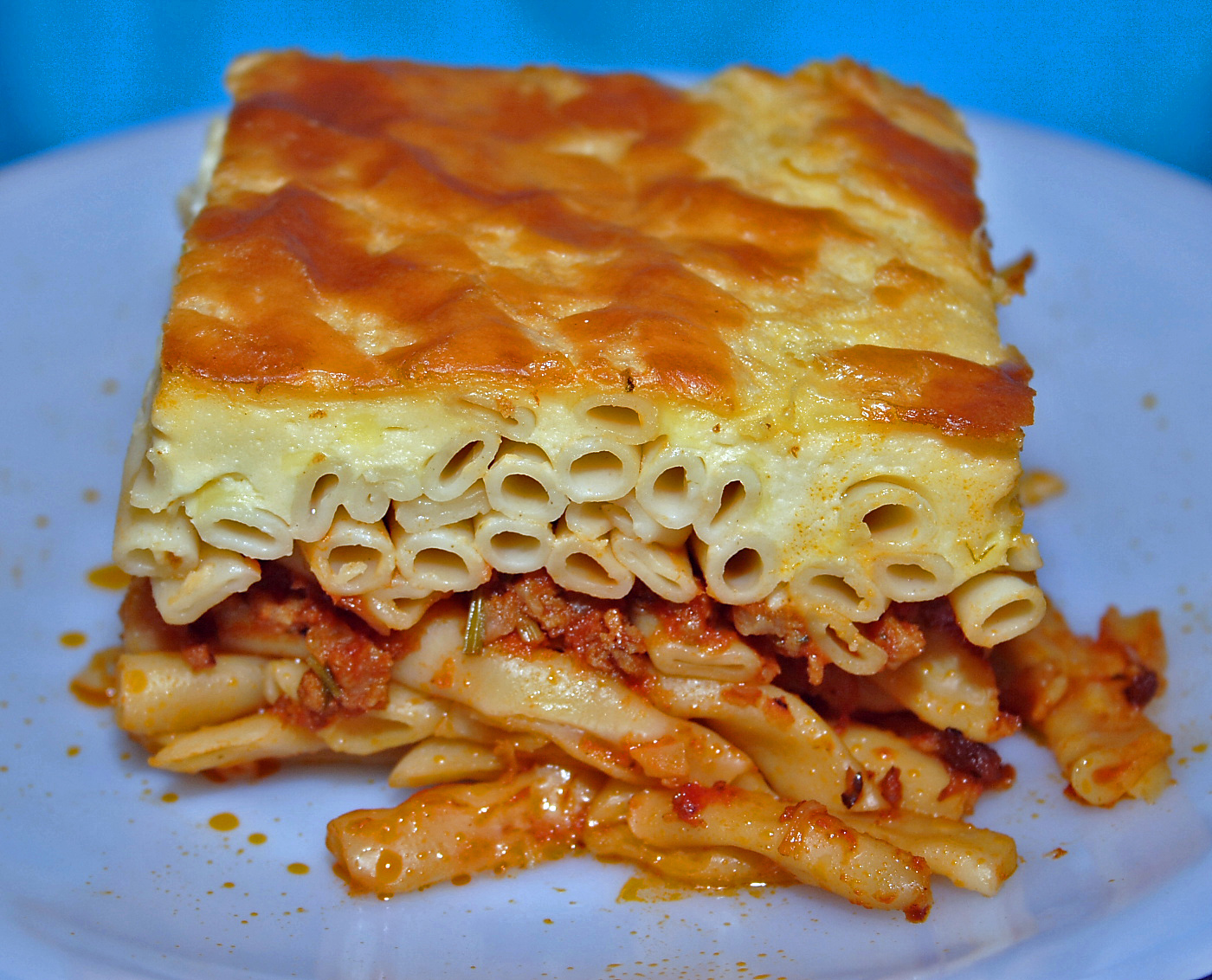|
Ground Meat
Ground meat, called mince or minced meat outside North America, is meat finely chopped by a meat grinder or a chopping knife. A common type of ground meat is ground beef, but many other types of meats are prepared in a similar fashion, including pork, veal, lamb, goat meat, and poultry. Dishes Ground meat is used in a wide variety of dishes, by itself, or mixed with other ingredients. It may be formed into meatballs which are then fried, baked, steamed, or braised. They may be cooked on a skewer to produce dishes such as ''adana kebabı'' and '' ćevapi''. It may be formed into patties which are then grilled or fried ( hamburger), breaded and fried ('' menchi-katsu'', Pozharsky cutlet), or braised ( Salisbury steak). It may be formed into meatloaves or pâtés and baked. It may also be used as a filling or stuffing for meat pies and '' böreks'', and also as stuffing. It may be made into meat sauce such as ragù, which in turn is used in dishes like pastitsio and ... [...More Info...] [...Related Items...] OR: [Wikipedia] [Google] [Baidu] |
Sausage Making-H-1
A sausage is a type of meat product usually made from ground meat—often pork, beef, or poultry—along with salt, spices and other flavourings. Other ingredients, such as grains or breadcrumbs may be included as fillers or extenders. When used as an adjective, the word ''sausage'' can refer to the loose sausage meat, which can be formed into patties or stuffed into a skin. When referred to as "a sausage", the product is usually cylindrical and encased in a skin. Typically, a sausage is formed in a casing traditionally made from intestine, but sometimes from synthetic materials. Sausages that are sold raw are cooked in many ways, including pan-frying, broiling and barbecuing. Some sausages are cooked during processing, and the casing may then be removed. Sausage-making is a traditional food preservation technique. Sausages may be preserved by curing, drying (often in association with fermentation or culturing, which can contribute to preservation), smoking, or fre ... [...More Info...] [...Related Items...] OR: [Wikipedia] [Google] [Baidu] |
Pozharsky Cutlet
A Pozharsky cutlet (russian: пожарская котлета, ', plural: , '; also spelled ''Pojarski'') is a breaded ground chicken or veal patty that is typical of Russian cuisine.Павел Сюткин, Ольга Сюткина. ''Непридуманная история русской кухни''Котлетная история Moscow: Астрель, 2015 (in Russian). .Н. А. Лопатина. История пожарских котлет. Тверь: ТО "Книжный клуб", 2014 (in Russian). Jeremy MacVeigh. ''International Cuisine''. Cengage Learning, 2008. pp218''Книга о вкусной и здоровой пище''. Moscow: Пищепромиздат (Food Industry publishing house), 1952, с. 191 (in Russian) nglish translation: ''Book of Tasty and Healthy Food: Iconic Cookbook of the Soviet Union''. Pozharskie croquettes. SkyPeak Publishing, 2012. /ref>Auguste Escoffier. ''A guide to modern cookery''. London: W. Heinemann, 1907. pp513 The dish ... [...More Info...] [...Related Items...] OR: [Wikipedia] [Google] [Baidu] |
Keema Pao With Hari Chutney
Ground meat, called mince or minced meat outside North America, is meat finely chopped by a meat grinder or a chopping knife. A common type of ground meat is ground beef, but many other types of meats are prepared in a similar fashion, including pork, veal, lamb, goat meat, and poultry. Dishes Ground meat is used in a wide variety of dishes, by itself, or mixed with other ingredients. It may be formed into meatballs which are then fried, baked, steamed, or braised. They may be cooked on a skewer to produce dishes such as ''adana kebabı'' and '' ćevapi''. It may be formed into patties which are then grilled or fried (hamburger), breaded and fried ('' menchi-katsu'', Pozharsky cutlet), or braised ( Salisbury steak). It may be formed into meatloaves or pâtés and baked. It may also be used as a filling or stuffing for meat pies and ''böreks'', and also as stuffing. It may be made into meat sauce such as ragù, which in turn is used in dishes like pastitsio and moussaka, o ... [...More Info...] [...Related Items...] OR: [Wikipedia] [Google] [Baidu] |
Chili Con Carne
Chili con carne (also spelled chilli con carne or chile con carne and shortened to chili or chilli; ), meaning " chili with meat", is a spicy stew containing chili peppers (sometimes in the form of chili powder), meat (usually beef), tomatoes and often pinto beans or kidney beans. Other seasonings may include garlic, onions, and cumin. The dish originated in northern Mexico or southern Texas. Geographic and personal tastes involve different types of meat and other ingredients. Recipes provoke disputes among aficionados, some of whom insist that the word ''chili'' applies only to the basic dish, without beans and tomatoes. Chili con carne is a common dish for cook-offs, and may be used as a side, garnish, or ingredient in other dishes, such as soups or salsas. Origins and history In writings from 1529, the Franciscan friar Bernardino de Sahagún described chili pepper-seasoned stews being consumed in the Aztec capital, Tenochtitlan, now the location of Mexico City. T ... [...More Info...] [...Related Items...] OR: [Wikipedia] [Google] [Baidu] |
Sloppy Joe
A sloppy joe is a sandwich consisting of ground beef, onions, tomato sauce or ketchup, Worcestershire sauce, and other seasonings, served on a hamburger bun. There are several theories about the sandwich's origin. History Early and mid-20th century American cookbooks offer plenty of sloppy joe-type recipes, though they go by different names: Toasted Deviled Hamburgers, Chopped Meat Sandwiches, Spanish Hamburgers, Hamburg a la Creole, Beef Mironton, and Minced Beef Spanish Style. One theory of the sandwich's origin is that in 1917, Havana, Cuba, bar owner José "Sloppy Joe" Abeal y Otero created "a simple sandwich filled with ground beef stewed in tomatoes." This was possibly his interpretation of ropa vieja. His bar was reportedly frequented by Americans and Brits, including Errol Flynn, Ernest Hemingway, and Graham Greene. Circa 1937, Hemingway convinced Joe Russell, a bar owner in Key West, Florida, to rename his Silver Slipper bar to Sloppy Joe's. Marilyn Brown, direct ... [...More Info...] [...Related Items...] OR: [Wikipedia] [Google] [Baidu] |
Moussaka
Moussaka (, , ) is an eggplant- or potato-based dish, often including ground meat, which is common in the Balkans and the Middle East, with many local and regional variations. The best-known version in Europe and the Americas is the Greek variant created in the 1920s by Nikolaos Tselementes. Many versions have a top layer made of milk-based sauce thickened with egg (custard) or flour (béchamel sauce). In Greece, the dish is layered and typically served hot. Tselementes also proposed a vegan variant for orthodox fast days. Romania also has a vegan version that replaces meat with mushrooms or a mix of sautéed onions and rice. The versions in Egypt, Turkey and the rest of the Middle East are quite different. In Egypt, ''messa'aa'' can be made vegan or vegetarian as well as with meat; in all cases, the main ingredient is the fried eggplant. In Turkey, ''mussaka'' consists of thinly sliced and fried eggplant served in a tomato-based meat sauce, warm or at room temperature. In ... [...More Info...] [...Related Items...] OR: [Wikipedia] [Google] [Baidu] |
Pastitsio
Pastitsio ( el, παστίτσιο, ''pastítsio'') is a Greek baked pasta dish with ground meat and béchamel sauce, with variations of the dish found in other countries of the Mediterranean Sea. Name and origin Pastitsio takes its name from the Italian ''pasticcio'', a large family of baked savory pies that may be based on meat, fish, or pasta, with many documented recipes from the early 16th century, and continuing to modern times. Italian versions include a pastry crust; some include béchamel. The word ''pasticcio'' is attested by the 16th century as "any manner of pastie or pye" and comes from the vulgar Latin word ''pastīcium'' derived from ''pasta'', and means "pie", and has developed the figurative meanings of "a mess", "a tough situation", or a ''pastiche''. In Egypt, it is called macarona béchamel ( arz, مكرونة بشاميل ). In the Albanian-speaking regions of the Balkans, the dish is called ''pastiçe'', deriving from ''pasticcio''. It is, however, often ... [...More Info...] [...Related Items...] OR: [Wikipedia] [Google] [Baidu] |
Ragù
In Italian cuisine, ragù () is a meat-based sauce that is commonly served with pasta. An Italian gastronomic society, Accademia Italiana della Cucina, documented several ragù recipes. The recipes' common characteristics are the presence of meat and the fact that all are sauces for pasta. The most typical is ''ragù alla bolognese'' (Bolognese sauce, made with minced beef). Other types are ''ragù alla napoletana'' ( Neapolitan ragù, made with a variety of pork and beef meats which may include sausages), ''ragù alla barese'' (Bari ragù, sometimes made with horse meat), ''ragù alla veneta'' (ragu from Veneto, a traditionally tomatoless duck ragù) Varieties In northern Italian regions, ragù typically uses minced, chopped or ground meat, cooked with sauteed vegetables in a liquid, which traditionally include liquidized tomatoes, but also exist in tomatoless versions referred to as ''ragù in bianco'' (white ragu). The meats may include one or more of beef, chicken, pork, d ... [...More Info...] [...Related Items...] OR: [Wikipedia] [Google] [Baidu] |
Sauce
In cooking, a sauce is a liquid, cream, or semi-solid food, served on or used in preparing other foods. Most sauces are not normally consumed by themselves; they add flavor, moisture, and visual appeal to a dish. ''Sauce'' is a French word taken from the Latin ''salsa'', meaning ''salted''. Possibly the oldest recorded European sauce is garum, the fish sauce used by the Ancient Romans, while doubanjiang, the Chinese soy bean paste is mentioned in '' Rites of Zhou'' in the 3rd century BC. Sauces need a liquid component. Sauces are an essential element in cuisines all over the world. Sauces may be used for sweet or savory dishes. They may be prepared and served cold, like mayonnaise, prepared cold but served lukewarm like pesto, cooked and served warm like bechamel or cooked and served cold like apple sauce. They may be freshly prepared by the cook, especially in restaurants, but today many sauces are sold premade and packaged like Worcestershire sauce, HP Sauce, ... [...More Info...] [...Related Items...] OR: [Wikipedia] [Google] [Baidu] |
Stuffing
Stuffing, filling, or dressing is an edible mixture, often composed of herbs and a starch such as bread, used to fill a cavity in the preparation of another food item. Many foods may be stuffed, including poultry, seafood, and vegetables. As a cooking technique stuffing helps retain moisture, while the mixture itself serves to augment and absorb flavors during its preparation. Poultry stuffing often consists of breadcrumbs, onion, celery, spices, and herbs such as sage, combined with the giblets. Additions in the United Kingdom include dried fruits and nuts (such as apricots and flaked almonds), and chestnuts. History It is not known when stuffings were first used. The earliest documentary evidence is the Roman cookbook, Apicius '' De Re Coquinaria'', which contains recipes for stuffed chicken, dormouse, hare, and pig. Most of the stuffings described consist of vegetables, herbs and spices, nuts, and spelt (a cereal), and frequently contain chopped liver, brains, and o ... [...More Info...] [...Related Items...] OR: [Wikipedia] [Google] [Baidu] |
Börek
Börek or burek are a family of pastries or pies found in the Balkans, Middle East and Central Asia. The pastry is made of a thin flaky dough such as filo with a variety of fillings, such as meat, cheese, spinach or potatoes. Boreks are mainly associated with Anatolia, the Middle East, Armenia, and also with the former Ottoman Empire, including the Balkans and the South Caucasus, Eastern European and Central European countries, Northern Africa and Central Asia. A borek may be prepared in a large pan and cut into portions after baking, or as individual pastries. They are usually baked but some varieties can be fried. Borek is sometimes sprinkled with sesame or nigella seeds, and it can be served hot or cold. It is a custom of Sephardic Jews to have ''bourekas'' for their Shabbat breakfast meal on Saturday mornings. In Bosnia and Herzegovina it has become commonplace to have borek as a breakfast food with coffee. It is commonly served with afternoon tea in Bosnia and Herzegovina ... [...More Info...] [...Related Items...] OR: [Wikipedia] [Google] [Baidu] |
Meat Pies
A meat pie is a pie with a filling of meat and often with other savory ingredients. They are found in cuisines worldwide. Meat pies are usually baked, fried, or deep fried to brown them and develop the flavour through the Maillard reaction. Many varieties have a flaky crust. History The origins of the meat pie have been traced back to the Neolithic period, around 9500 BC. Versions of what are now known as pies were featured on ancient Egyptian tomb walls, and in ancient Greek and Roman texts. The ancient Egyptians' diet featured basic pies made from oat, wheat, rye, and barley, filled with honey and baked over hot coals. The Greeks used a flour-water paste resembling pie pastry, and filled it with meat. These pies were usually fried or cooked under coals. The Romans adopted the Greek creations, using a variety of meats, oysters, mussels, lampreys, and fish as filling and a mixture of flour, oil, and water for the crust. This 'pastry' cover was not meant to be eaten and was di ... [...More Info...] [...Related Items...] OR: [Wikipedia] [Google] [Baidu] |










